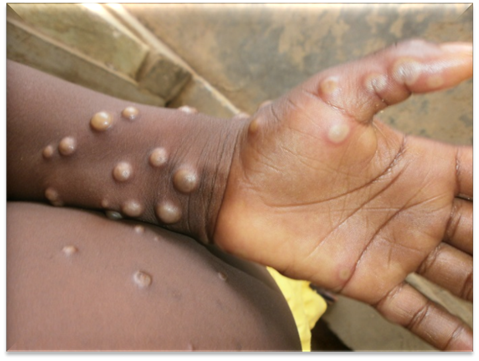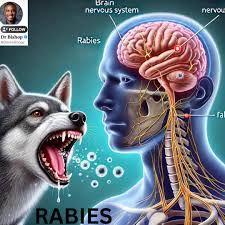Meaning of Monkey Pox
Monkeypox is a rare viral disease caused by the monkeypox virus, which belongs to the Orthopoxvirus genus, the same family as the viruses causing smallpox and cowpox. First identified in laboratory monkeys in 1958 and in humans in 1970 in the Democratic Republic of Congo, the disease has predominantly affected regions in Central and West Africa. It is characterized by a rash similar to that of smallpox but generally less severe.
Causes of Monkey Pox Disease
Monkeypox is caused by the monkeypox virus, which can infect both animals and humans. The virus is primarily found in tropical rainforests of Central and West Africa, where it circulates among animals such as rodents and primates. Human cases can result from direct contact with infected animals, their bodily fluids, or through the consumption of undercooked meat from infected animals. Secondary human-to-human transmission can occur but is less common.
Signs and Symptoms of Monkey Pox Disease
The incubation period for monkeypox is typically 6 to 13 days, though it can range from 5 to 21 days. The initial symptoms are similar to those of the flu, including fever, headache, muscle aches, and fatigue. Lymphadenopathy (swollen lymph nodes) is a key feature that distinguishes monkeypox from smallpox. After 1 to 3 days, a rash develops, often starting on the face and spreading to other parts of the body. The rash evolves from macules (flat, discolored spots) to papules (raised bumps), vesicles (fluid-filled blisters), and eventually crusts that fall off. The illness typically lasts 2 to 4 weeks.

Mode of transmission of Monkey Pox Virus
Monkeypox can be transmitted through direct contact with the blood, bodily fluids, or lesions of infected animals or humans. It can also spread through respiratory droplets during prolonged face-to-face contact or through contaminated objects like bedding and clothing. The virus enters the body through broken skin, the respiratory tract, or mucous membranes (eyes, nose, or mouth).
People at the Risk of Contacting the Virus
1. People living in or traveling to areas where monkeypox is endemic (Central and West Africa) are at higher risk of contracting the virus.
2. Healthcare workers and those caring for infected individuals are also at increased risk, especially without appropriate protective measures.
3. People who handle animals that could carry the virus, such as certain rodents and primates, are at risk.
Prevention of Monkey Pox Disease
1. Preventing monkeypox involves avoiding contact with potentially infected animals.
2. practicing good hygiene
3. Wearing protective clothing when handling animals or caring for infected individuals.
4. The smallpox vaccine has been shown to provide some protection against monkeypox, and in some cases, it is recommended for those at high risk.

Note: Monkeypox is a viral zoonosis that poses significant health risks, especially in regions where it is endemic. While generally less severe than smallpox, monkeypox can still cause serious illness and even death in some cases. Understanding the disease’s causes, symptoms, and transmission routes is crucial for prevention and control efforts.
In Conclusion: As global travel and environmental changes increase the risk of zoonotic diseases like monkeypox, heightened awareness and preventive measures are essential. Public health education, vaccination, and monitoring of potential outbreaks are key strategies in managing the spread of monkeypox and protecting at-risk populations.




